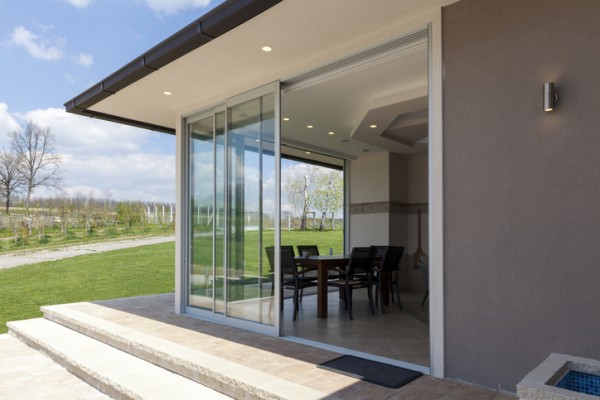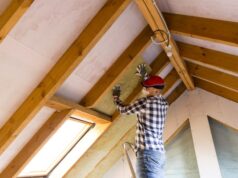
Sleek, durable and surprisingly versatile, aluminium doors have become a favourite for renovators looking to blend contemporary style with performance. Whether you’re building new or upgrading existing doors, aluminium is worth considering for both interior and exterior applications.
Strong yet lightweight
Aluminium is a non-ferrous metal, which means it won’t rust or degrade like steel in wet or humid conditions. This makes it ideal for outdoor settings such as patios, balconies and pool areas. It’s also incredibly lightweight compared to timber or steel, so it places less strain on hinges and framing.
That strength-to-weight ratio makes aluminium the go-to choice for large-format doors like sliding or bi-folds, which often need to span wide openings while remaining easy to operate. You’ll often see it paired with double-glazed glass to improve thermal insulation and reduce noise.
Great for weather and corrosion resistance
One of aluminium’s biggest advantages is its resistance to the elements. Unlike timber, it won’t swell or shrink with humidity or seasonal changes. That means fewer sticking doors and a longer lifespan in coastal or exposed locations.
Modern aluminium doors are usually powder-coated or anodised, which protects them from UV degradation and corrosion. If you’re considering aluminium for a front door, make sure the coating is rated for exterior use, particularly in high-UV or salt-air environments.
Design flexibility for contemporary homes
Aluminium’s sleek, minimalist profile makes it perfect for modern architectural styles. Frames can be ultra-thin without sacrificing strength, allowing more natural light into your home—especially in glass doors. Aluminium also works beautifully in combination with other materials like timber trims, frosted glass or composite panels.
You’ll find aluminium used in everything from hinged doors and French doors to large custom units. Frames can be colour-matched to your home’s palette, or finished in striking monochromes for a more industrial feel.
Security and performance
While aluminium itself is strong, its real strength lies in how it’s built. A well-made aluminium door includes internal reinforcements, quality welds or corner brackets, and secure locking systems. Many manufacturers also integrate thermal breaks or foam cores to address aluminium’s natural conductivity—an important consideration for thermal performance.
Aluminium security doors—especially those with a steel or stainless mesh—are also popular for their unobtrusive appearance and high resistance to tampering. For more detail, check out our article on security screen doors.
Easy maintenance
One of the simplest benefits of aluminium is how little it demands from you. Unlike timber, there’s no need to repaint or reseal every few years. Occasional cleaning with mild detergent and water is usually enough to keep frames looking sharp. If you’re comparing long-term upkeep between materials, our overview of door material types is a helpful place to start.
When aluminium might not be ideal
While aluminium is excellent in many applications, it’s not always the best choice. For high-traffic interior doors, a solid-core timber door might offer better impact resistance. And if you live in a bushfire-prone area, check the relevant BAL rating to make sure aluminium doors comply with AS 3959.
For extreme energy efficiency or high acoustic requirements, you might want to consider double-glazed units or thermally broken frames, which offer much better performance than basic aluminium profiles.
Final thoughts
Aluminium doors are a smart, low-maintenance solution that suits a wide range of Australian homes. From ultra-modern sliders to elegant hinged designs, aluminium delivers long-term performance with clean architectural lines.





